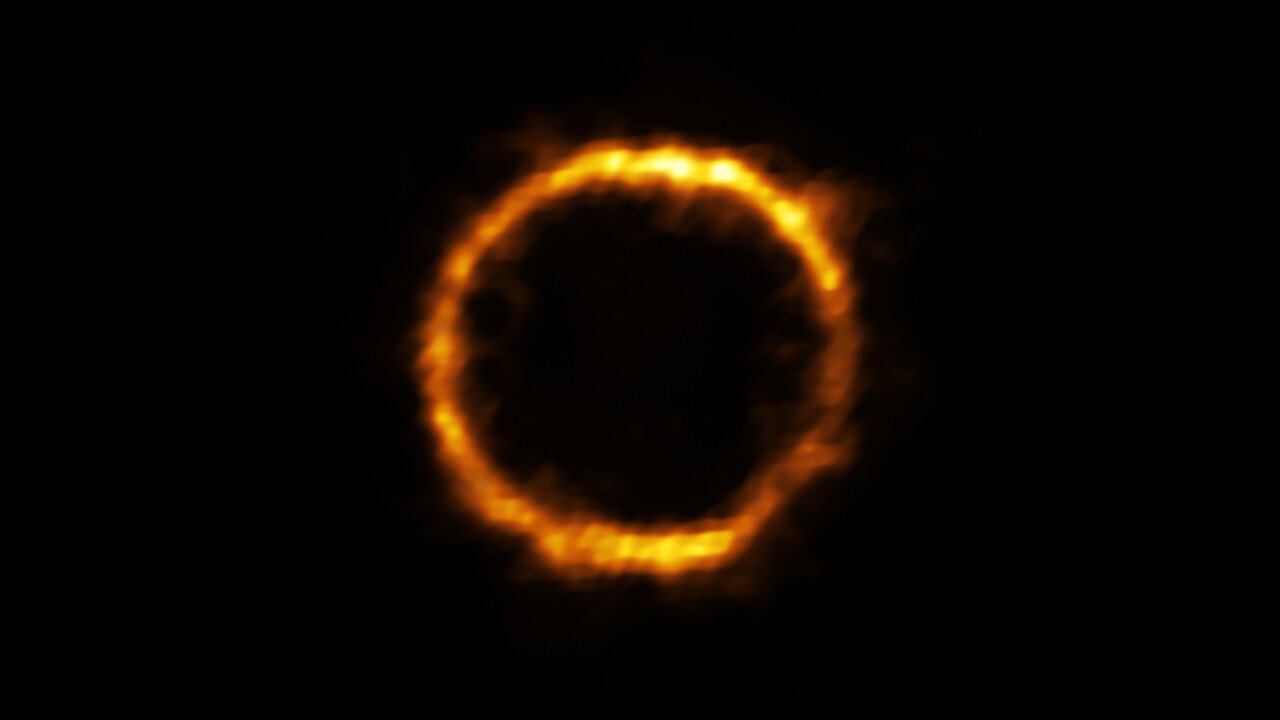
Galaxy is distorted, appearing as a ring of light in the sky...
Read More

Galaxy is distorted, appearing as a ring of light in the sky...
Read More
This is a composite which combines gas temperature (as the color) and shock mach number (as the brightness). Red indicates 10 million Kelvin gas at the centers of massive galaxy clusters, while bright structures show diffuse gas from the intergalactic medium shock heating at the boundary between cosmic voids and filaments. Credit: Illustris Team
A multi-institutional team gives the cosmology community a world-class simulation to study how the universe formed. Humans have long tried to explain how stars came to light up the night sky. The wide array of theories throughout history have one common (and correct) governing principle that astrophysicists still use to this day: by understanding the stars and their origins, we learn more about where we come from...
Read More
Image: . Angular Momentum of Early- and Late-type Galaxies: Nature or Nurture? The Astrophysical Journal, 2017; 843 (2): 105 DOI: 10.3847/1538-4357/aa7893

A deep photographic image of M83 taken using the UK Schmidt Telescope by Malin & Hadley (1997, figure reproduced with permission) where the white scale bar corresponds to 30 arcmin. The northern stream appears not to be associated with dw1335-29, circled in red. Credit: Carrillo et al., 2016.
M83, Southern Pinwheel Galaxy has a newly found dwarf satellite 85,000 light years from its host. This satellite galaxy was designated dw1335-29 and could be an irregular or a transition dwarf. Messier 83 is one of the closest and brightest barred spiral galaxies. It is located about 15 million light years away in the constellation Hydra. Finding new satellites of galaxies beyond the Local Group such as Messier 83 could provide essential insights on galaxy formation in a cosmological context.
In 2015,...
Read More
Recent Comments